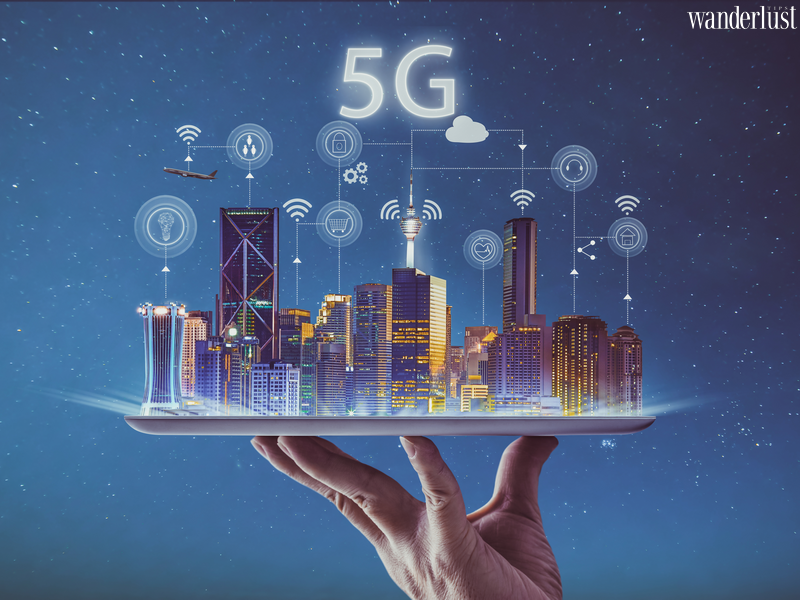With so many tools and possibilities accessible, many people struggle to know where to begin. In this article, we will look at some of the top travel tech trends for 2022 and examine how they may affect the industry in the future.
[rpi]
The tourism industry has typically been sluggish to adopt new technology, but COVID-19 has accelerated digitalization. Players in the industry have been experimenting with cutting-edge technologies in order to optimize procedures and bring fresh products to guests.

Photo by @alphaspirit.it | Shutterstock
At the same time, the pandemic has had a significant impact on tourist demands and expectations. With borders reopening, those who can meet these demands will have a competitive advantage. However, with so many technologies and possibilities accessible, many people struggle to know where to begin. As a result, in this article, we will look at some of the top travel tech trends for 2022 and examine how they may affect the sector in the future.
Covid brings new tech, but also new security concerns
As COVID-19 limitations begin to soften in numerous nations, many stakeholders are already beginning to embrace new technology that will assist them in safely welcoming tourists back. Contactless solutions, social distancing and crowd management tools, digital health passports, hygienic robotics, QR codes, and contact tracing apps are among these technologies.

Photo by @Anja Ivanovic | Shutterstock
From restaurant menus to coupons, the usage of QR codes as a contactless means to transmit information to guests and customers exploded throughout the pandemic. However, cybersecurity experts believe that hackers are looking for new ways to capitalize on this trend, such as altering QR codes on businesses’ websites or luring naïve visitors with promises of free Wi-Fi networks. As more regions open up to tourism, security efforts will need to be stepped up. Adoption of COVID-related technology, as well as new AI-based cybersecurity and anti-fraud solutions, will be a prominent trend.
Creating smarter, bolder immersive experiences
COVID- 19 constraints also shifted events and exhibitions online, yielding some novel new use of VR and AR technology. Despite the fact that tourists are returning to physical destinations, the use of this technology is unlikely to slow. Instead, we’re witnessing a sharper and more daring combination of physical and digital encounters.

Photo by @Max kegfire | Shutterstock
Some people are exploiting this technology to get beyond physical boundaries. Traveling to VR-based attractions can save expenses and offer experiences directly to visitors by eliminating the need for large-scale buildings and physical space. Some IT companies, for example, offer portable robotic arm-based VR roller coasters that can be rented for expos, events, and even put on cruise liners.
Cultural institutes are utilizing virtual reality and augmented reality to make travel to historical monuments more sustainable, ensuring that these places can be enjoyed for many years to come. A variety of AR and VR initiatives have been carried out in the ruin-rich city of Rome to give tourists a more in-depth view of what landmarks and archaeological sites may have looked like in the past.
The intersection of travel and wellness technology
Prior to the pandemic, health and wellness tourism was on the upswing, with yoga boot camps, meditation retreats, and alternative spa treatments becoming popular. Wellness Tourism is expected to reach $919 billion by 2022, according to the Global Wellness Institute.

Photo by @metamorworks | Shutterstock
Indeed, during a recent Tcube event titled “Travel Tech Trends in 2022,” 83.9 percent of guests felt that wellbeing will be significant in the tourism industry in the future (watch the recording below). We are currently witnessing a shift in the way the tourism industry defines ‘wellness.’ Rather than focusing solely on spas, prominent players are increasingly emphasizing a holistic approach to wellbeing that incorporates fitness, lifestyle, nutrition, and mental health.
Blockchain and NFTs are coming, are you ready?
Blockchain has already made an appearance in the travel IT industry as a safety mechanism to communicate visitor data between different travel organizations, authenticate IDs, issue customer loyalty points, and other functions. “Blockchain, in general, aids in the removal of gatekeepers and the streamlining of procedures involving several stakeholders.” “This is already a game-changer in tackling pain issues for fragmented businesses, and travel is profoundly fragmented,” stated Henry Chen Weinstein, General Partner at One Travel Ventures, during our ‘Travel tech trends 2022’ event.

Photo by @PopTika | Shutterstock
For example, if a visitor wants to book a trip with an airline, a vehicle rental with a rental firm, and a tour with a travel agent all on the same platform, these businesses will need a secure mechanism to communicate that visitor’s data, and blockchain can help.
Wider usage of this technology is also opening the road for blockchain-related technology, such as NFTs. Non-fungible tokens, or NFTs, are digital assets that reflect real-world goods. This could include everything from artwork to music to baseball cards. NFTs are one-of-a-kind assets that use blockchain technology and cannot be traded or replaced.
5G is speeding up the future
Finally, 5G is on its way, promising quicker data exchanges with lower latency, more connection density, and improved energy efficiency. Singapore has already initiated pilots across the country this year, with the goal of reaching 50 percent coverage by the end of 2022 and comprehensive coverage by 2025.

Photo by @jamesteohart | Shutterstock
Offering a disruption-free connection will be critical for the widespread adoption of upcoming technologies such as IoT, AR/VR, chatbots, and others. And, as with any new technological improvement, it will open the door to new possibilities for invention.

